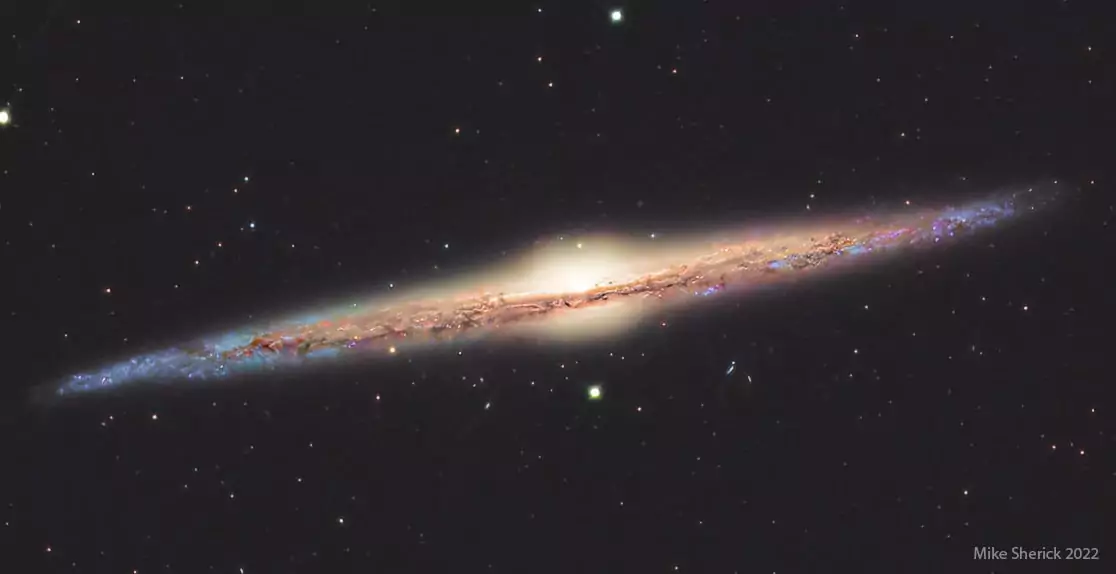The magnificent spiral galaxy NGC 4565 is visible from the edge of the planet Earth. Because of its thin profile, it is often called the Needle Galaxy. The bright galaxy NGC 4565 is a good object for observations in the northern sky. She is in the faint but elegant constellation of Veronica’s Hair.
This image shows the central bulge of the galaxy intersected by bands of light-absorbing dust adorning the thin plane of the galaxy. The distance to NGC 4565 is about 40 million sv. years, and its size reaches 100 thousand sv. years.
NGC 4565 can be easily seen even with a small telescope, and lovers of contemplating the sky consider it a real heavenly treasure that Messier did not notice.
